XML and XML Rules
advertisement
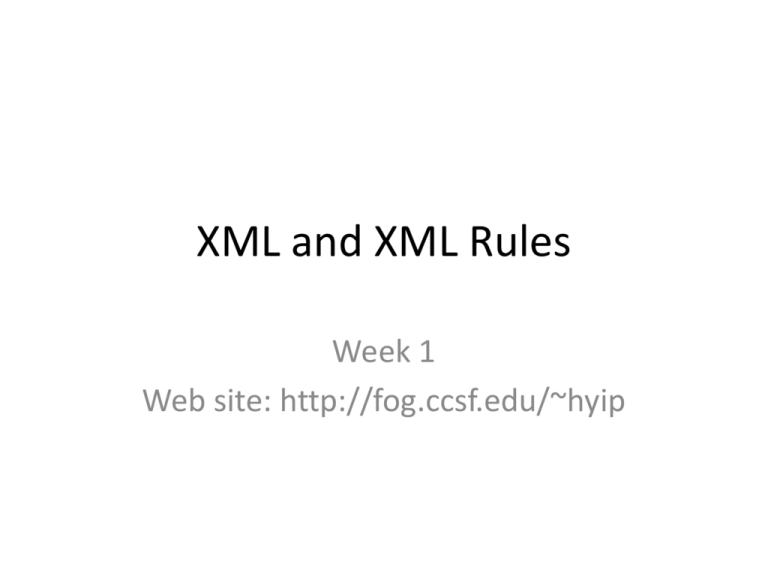
XML and XML Rules Week 1 Web site: http://fog.ccsf.edu/~hyip XML consists of • XML Declaration (first line): specifies version of XML that you are using. • Root element (second line): describes the data part of the document, and there can be only one root element. • Child element (third line): describes the root element in more detail. <phone> element contains an attribute called “format” which is the format of the phone. Attributes are used to include additional information to the element, without adding text to the element itself. • Last element (last line) is the closing tag of the root element. Valid and Well-form XML <?xml version="1.0"?> <contact> <friend> <name>Name 1</name> <phone format="dash">415-123-4567</phone> <email>name1@abc.com</email> </friend> <friend> <name>Name 2</name> <phone format="dash">415-234-5678</phone> <email>name2@abc.com</email> </friend> </contact> XML Rules 1. A root element is required. 2. Closing tags are required. Empty elements can use a separate closing tag, or an allin-one opening and closing tag with a slash before the final >. 3. Elements must be properly nested. If you start element A, then start element B, you must first close element B before clsing element A. 4. Case matters. 5. Values must be enclosed in quotation marks. An attribute’s value must always be enclosed in either matching single or double quotation marks.
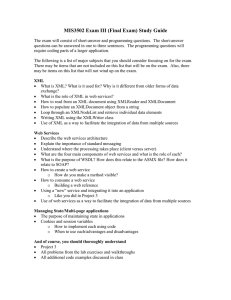




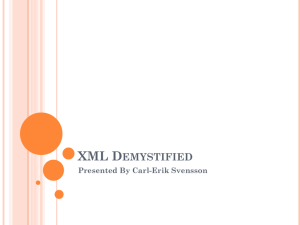
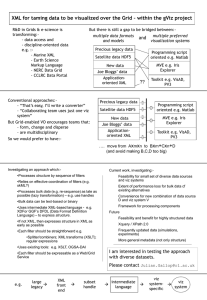

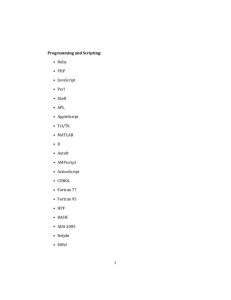
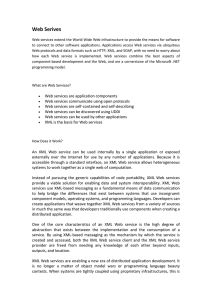
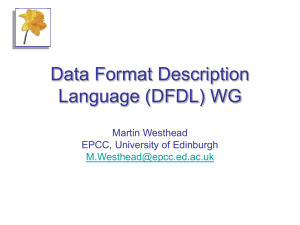
![[#CARBON-13743] Key store password of catalina](http://s3.studylib.net/store/data/007841975_2-b5be293be17dfbfd4fa5374476b625ea-300x300.png)